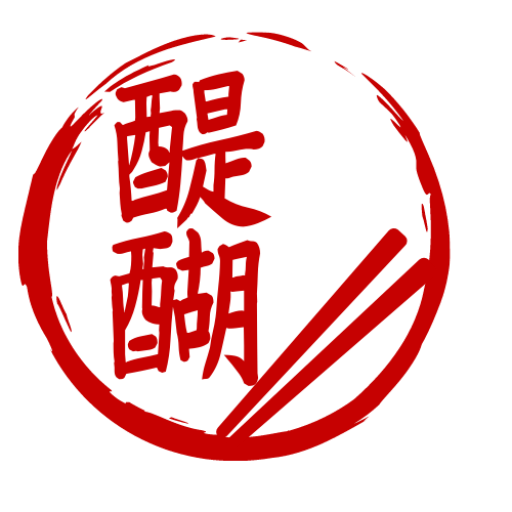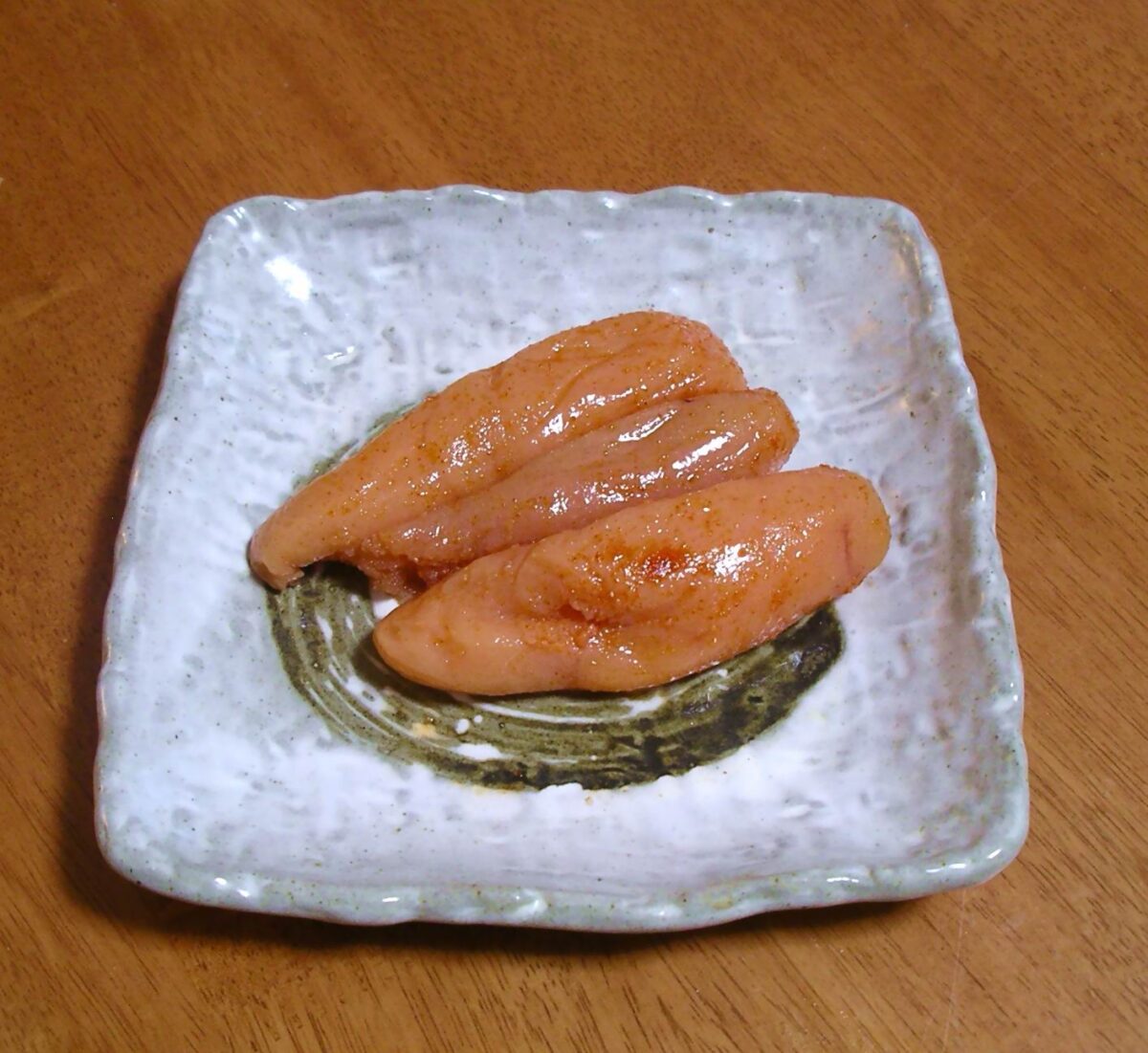A couple of weeks ago, I went to Fukuoka, a city in the North of Kyūshū in Western Japan: other than being a major port, Fukuoka is also renowned in Japan as a gourmet city. Particularly worth mention are its two meibutsu 名物, or local delicacies: one, a pork broth-based ramen, known as Hakata ramen, and mentaiko 明太子, sometimes translated as spicy fish roe.
I ate plenty of both during my short stay: however, since ramen is not typically considered a part of traditional Japanese cuisine (for reasons we might explore in the future), in this post, I will only write about mentaiko and its exciting origin story.
What is mentaiko?
Mentaiko, again translated in English as “spicy fish roe,” are the ovary sacks of a fish called walleye pollock (a type of cod), which are then pickled in salt and, most importantly, red chili peppers – called tōgarashi 唐辛子in Japanese. The spiciness of the tōgarashi is what distinguishes mentaiko from a similar preparation, called tarako 鱈子, which is the same part of the same fish (the word tarako means “children of the cod” with tara 鱈 being the Japanese name of the walleye pollock), which are just salted.

Mentaiko origins and how it became part of Washoku
Although many people in the Northern Pacific have been using cod in their cuisine, the preparation currently known as mentaiko in Japan traces back to a Korean food called myeongnan-jeot, whose first account appears in Korea in the 17th century, mentioned in the diary of a Royal secretary. It is unclear when precisely myeongnan-jeot – pronounced as mentaiko in Japanese – made it to Japan, as there are historical references of Japanese people mentioning this food only a few years after its first traceable appearance in Korea.
Still, the most widely accepted story now says that mentaiko was introduced to Japan by the Korean-born Toshio Kawahara, who founded the oldest mentaiko company in Japan after WWII: Fukuya.
From there, mentaiko quickly raised in popularity, and although it isn’t quite the global phenomenon that its fellow citizen ramen is (yet!), it is a widely consumed food in Japan, usually eaten by very simply putting it on top of some steamed rice or in onigiri rice balls, or as a snack to be consumed while drinking alcohol. Mentaiko is also combined with butter to create a mentaiko sauce, featured in many recipes – with perhaps the most widespread being a pasta-based fusion dish, mentaiko supaghetti 明太子スパゲッティ- and it is interesting to know that this “new” instance of mentaiko still links Japan and Korea, as a similar word exists in the Peninsula too.
When does a food become part of Washoku?
As per the Japanese Food & Manner Proficiency Test definition, Washoku, or the traditional Japanese food culture, is “the food culture indigenous to Japan that is characterized by the consumption of Japanese food.” And yet, although mentaiko arrived with certainty in Japan only after the War, it is recognized by most Japanese people (and by the textbook for the Test, too!) as a part of Washoku.
By contrast, and to return to the original mention of the other Fukuoka’s most known soul food, ramen, the worldwide famous Japanese food item, arrived in Japan from China at least half a century before mentaiko. However, it is still not commonly considered Washoku.
So, when does an imported food become accepted as part of traditional cuisine?
There doesn’t seem to be a clear answer to this question, so I will try to guess. I suspect that the main reason for mentaiko having been accepted as a traditional Japanese food that quickly is that it builds on an already existing basis: cod roe is, after all, an ingredient used in all of the Eastern Pacific culinary traditions, so one can see mentaiko as a kind of variation on something already familiar to the Japanese tastebuds- like tarako -while ramen is conceptually more different from traditional Japanese cuisine (while there is plenty of noodles with broth in Japanese cuisine, Japanese broths are traditionally made out of seafood, not meat as in the case of ramen).
What is certain, though, is that the trip to Fukuoka didn’t include only eating physical food, but also quite literally food for thought! Japanese traditional cuisine, Washoku, is incredibly variegated and, of course, influenced by other culinary traditions like any other cuisine in the world. Definitions of what is a traditional food and what is not are not always clear, and sometimes the only thing that will make one food fully recognized as part of traditional cuisine is time.

